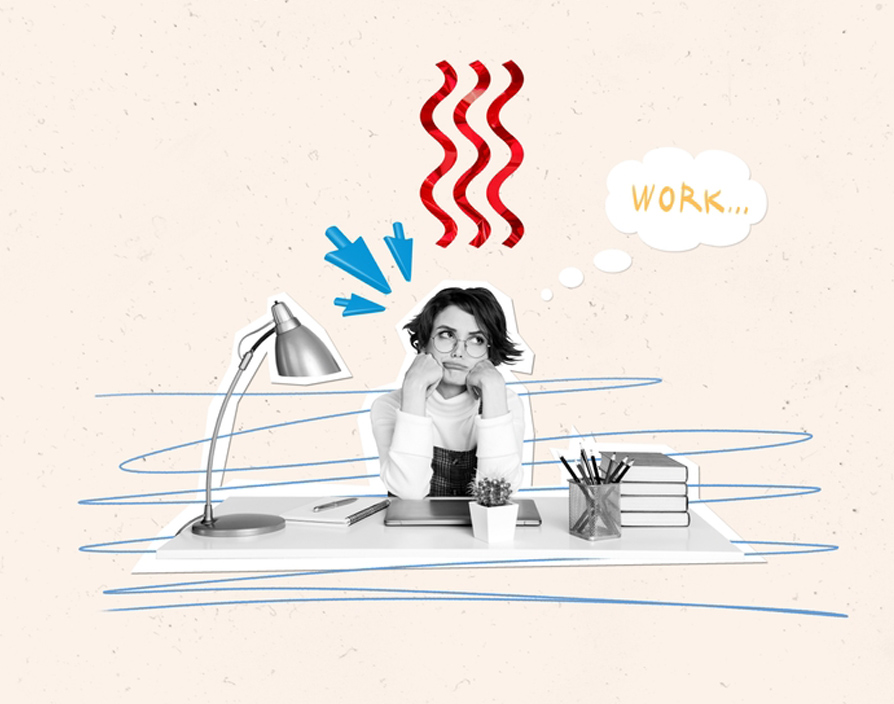Given this, it’s no wonder that burnout is on the rise globally. And yet, on inspection, this is really a bizarre state of affairs. After all, in our modern working environment we have more tools than ever to make work easier and more efficient. With the internet at our fingertips and an app for every occasion, surely we should be less busy! And yet, for most workers, the opposite is true.
This phenomenon has been dubbed “techno-stress”, with the omnipresence of technological devices and tools actually worsening our sense of overwhelm, and ultimately leaving us more vulnerable to burnout than ever before.
All this is not to mention that AI is on the rise. Job transformation will be an inevitable part of this burgeoning change to the working landscape – and as the more repetitive, simple parts of our jobs are increasingly taken over by AI, creativity will become highly prized as one of the most important skills for staying abreast in the future.
This is why it’s crucial we prioritise our overall creative ability now – something that is no mean feat in our busyness-obsessed world. One of the main issues is our actual attitude to work. So many of us waste time fire-fighting problems as they occur, or bogged down in our inboxes and in meetings, instead of actually working through our projects in a real, strategic way.
This phenomenon has become known as “Busy Fool Syndrome” (BFS), and it’s something all of us have fallen prey to at some point or other. The good news is that beating BFS, overcoming overwhelm, and ultimately improving your creativity might just be easier than you think.
While catch-all solutions can ostensibly seem like a con, let me promise you that this case is the exception – it’s also a technique which might, on the surface, sound unconventional. That’s because the secret to escaping busyness burnout is actually daydreaming. To be specific, a form of mind wandering I call “focussed daydreaming”.
I know, I know. It sounds crazy at first. How can daydreaming help you be less busy, while also nurturing your creativity? Well, though it is not common knowledge, daydreaming is actually a crucial neurological process. Multiple studies have linked regular daydreaming with heightened creative ability, problem solving skills, and even improved mood. What’s more, regular breaks are essential to avoiding burnout – literally preventing stress from building up in the brain.
While it can be intimidating to fit regular breaks into your routine – especially when those breaks involve something quirky, like daydreaming – it can actually be an excellent motivator for switching out of a busy-oriented mindset. Forcing you to actually prioritise seriously, eliminate unnecessary meetings, and chunk communication (such as email) so it doesn’t continually interrupt you throughout the working day.
Even more important is the ability of the daydreaming technique to foster your own creative thinking abilities. Neurologically, you can imagine that the focussed mind is like a spotlight, with other parts of the brain powered down in order to shine a more intense light on the work in front of you. Conversely, daydreaming allows all of your brain to light up in a soft, diffuse focus so that new connections can be made, and interesting ideas become more accessible.
Still, to really enjoy the benefits of focussed daydreaming, you need to make sure that the key “focus” part is in there. Here are the three crucial steps to applying focussed daydreaming to boost your creativity:
- Find your focus. For your daydream session to be productive, you should have an intention in mind. That might be to uncover ideas for a new campaign or find a solution to a tricky problem – either way, know your desired outcome.
- Information for inspiration. With your area of focus decided, immerse yourself in this subject – this will fuel and focus the subconscious mind, providing inspiration for breakthroughs when daydreaming.
- Activate the daydream state. Enter the daydreaming state via your preferred technique. When ideas naturally occur, capture them and walk away armed with innovative solutions and recharged mental batteries.
By making time to go through this process more regularly – whether that be during your commute into work, on a break, or even while doing your chores (a great opportunity to get some daydreaming in!), you’ll soon find that creative thinking comes naturally and frequently.
The beauty of this technique, too, is that the more you do it, the more innovative momentum you build up over time. So you can cultivate creativity, become more productive, and ultimately be more successful and content at work!
Share via:









































